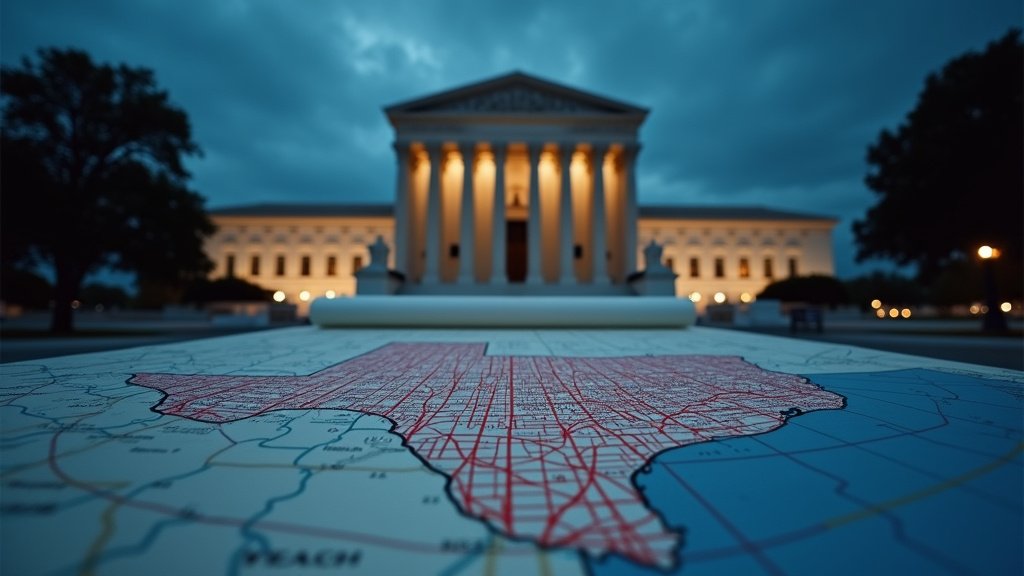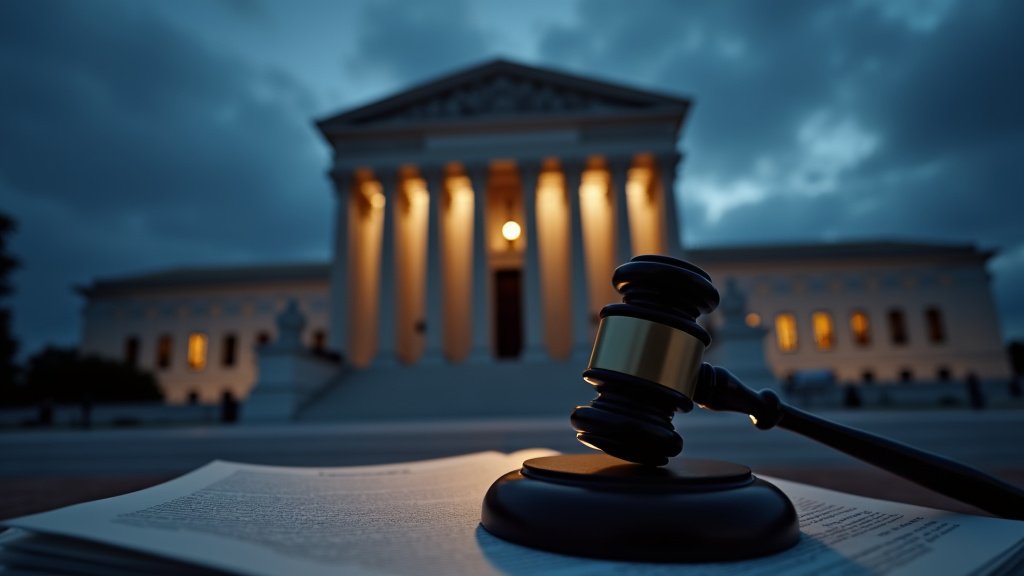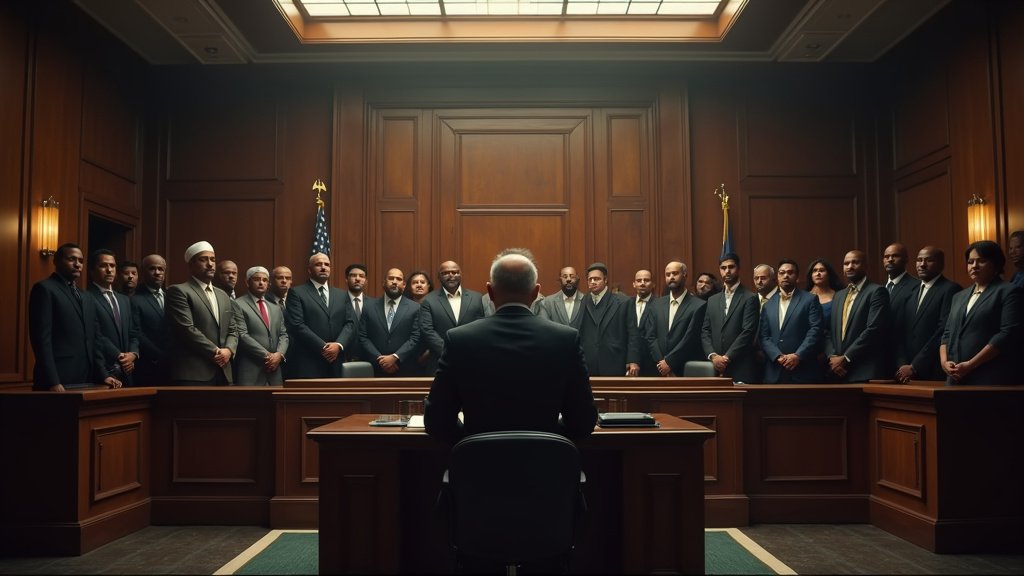Supreme Court Halts Lower Court Order, Allowing Texas’s Controversial New Texas Congressional Map to Stand For Now
In a significant development for the upcoming 2026 election cycle, the U.S. Supreme Court has temporarily restored Texas’s newly drawn Texas Congressional Map. Justice Samuel Alito, acting on an emergency appeal filed by Texas Attorney General Ken Paxton, issued an administrative stay late Friday, pausing a lower court’s ruling that had blocked the map due to allegations of racial gerrymandering. This move keeps the Texas Congressional Map, designed to bolster Republican representation, in play for now, averting immediate disruption to the state’s election preparations.
This decision by Justice Alito, who handles emergency appeals from Texas, is a crucial, albeit temporary, victory for state Republicans and the Trump-backed redistricting effort. It effectively overrides a November 18th ruling by a three-judge federal panel in El Paso, which had declared the 2025 map likely an unconstitutional racial gerrymander and ordered Texas to revert to its 2021 congressional district lines. The Supreme Court has not yet decided whether to hear the full case, but this stay ensures that the contested Texas Congressional Map will be used for the state’s upcoming March 2026 primary elections, a decision that comes as candidate filing deadlines loom.
The Genesis of a Contested Texas Congressional Map: Trump’s Push for Republican Advantage
The controversy stems from a mid-decade redistricting push initiated by former President Donald Trump, who urged Texas to redraw its congressional map to create more seats favorable to Republicans. With a slim GOP majority in the U.S. House of Representatives – currently 219 Republicans to 214 Democrats, with two vacancies – and historical trends showing the president’s party often loses seats in midterm elections, the Texas Congressional Map was engineered to potentially deliver five additional Republican-held districts. The Texas Legislature, with its Republican majority, passed the map in August 2025, despite attempts by Democratic lawmakers to disrupt the process, including a walkout aimed at breaking quorum.
Governor Greg Abbott swiftly signed the bill, proudly dubbing it the “One Big Beautiful Map.” The passage of this Texas Congressional Map was seen as a significant win for Texas Republicans, who aimed to increase their congressional delegation from 25 to potentially 30 seats, thereby solidifying the party’s influence in Washington. This move also spurred similar redistricting efforts in other states, with Missouri and North Carolina drawing maps to add Republican seats, while California adopted one to benefit Democrats.
Racial Gerrymandering Allegations Surface in Lower Court Regarding the Texas Congressional Map
However, the map’s passage was immediately met with legal challenges from civil rights groups, including the Texas NAACP and the Lawyers’ Committee for Civil Rights Under Law, representing Black and Hispanic voters. These organizations argued that the Texas Congressional Map was an unconstitutional racial gerrymander, intentionally designed to dilute the voting power of minority communities and dismantle majority-minority districts. They presented evidence that race, not just political partisanship, was the predominant factor in drawing the new district lines for the Texas Congressional Map.
On November 18, 2025, a three-judge federal court panel, in a 2-1 decision, sided with the challengers. U.S. District Judge Jeffrey V. Brown, a Trump appointee, authored the majority opinion, stating that “substantial evidence shows that Texas racially gerrymandered the 2025 Map.” The court found that while politics played a role, race was a determining factor, leading to an injunction that blocked the Texas Congressional Map’s use for the 2026 elections. Judge David Guaderrama agreed, while U.S. Circuit Court of Appeals Judge Jerry Smith filed a strong dissent, calling the majority’s decision “the most blatant exercise of judicial activism” he had ever witnessed.
Texas’s Defense: Partisan Advantage, Not Racial Discrimination in the Texas Congressional Map
Texas, led by Attorney General Ken Paxton, vehemently contested the lower court’s findings regarding the Texas Congressional Map. In its appeal to the Supreme Court, the state argued that the map was drawn for legitimate political and partisan reasons to better represent the state’s conservative electorate and secure more Republican seats, rather than for racial considerations. Paxton labeled the lawsuit a “radical left-wing” attempt to “steal the U.S. House for Democrats” and accused challengers of hurling “baseless ‘racism’ accusations because they are losing.”
The state also emphasized the disruption caused by the lower court’s late injunction on the Texas Congressional Map. With candidate filing deadlines approaching on December 8 and primary elections slated for March 2026, Texas argued that reverting to the old map would create widespread chaos and confusion for voters, candidates, and election officials. The petition highlighted that 37 of the state’s 38 congressional districts would have their boundaries changed, impacting campaigning that had already begun and ballot preparation for the new Texas Congressional Map.
The Supreme Court’s Role and the Road Ahead for the Texas Congressional Map
Justice Alito’s administrative stay allows Texas to proceed with the 2025 Texas Congressional Map while the Supreme Court deliberates. This intervention is not uncommon in redistricting cases, particularly when lower court rulings disrupt election timelines close to critical deadlines. The doctrine of “Purcell principle” – which discourages changing election rules too close to an election – often factors into these emergency decisions regarding the Texas Congressional Map.
The ultimate fate of the Texas Congressional Map now rests with the full Supreme Court. The justices are being asked to weigh the complex interplay between partisan and racial gerrymandering, and the extent to which courts should intervene in state redistricting processes, especially when claims of racial discrimination are involved. The court’s decision will have significant implications not only for Texas’s representation in Congress but also for the broader landscape of election law and the balance of power in national politics, particularly concerning the Texas Congressional Map.
This trending news story highlights the ongoing battle over political power and representation in Texas. The Supreme Court’s next steps will determine whether the Republican-leaning Texas Congressional Map, pushed by President Trump and enacted by the Texas Legislature, will shape the state’s congressional delegation for the 2026 elections, or if the state will revert to the 2021 lines as initially ordered by the federal court. The urgency is palpable, with the candidate filing deadline just weeks away, making this a top news story with far-reaching consequences for the Texas Congressional Map and the future of Texas election law.






